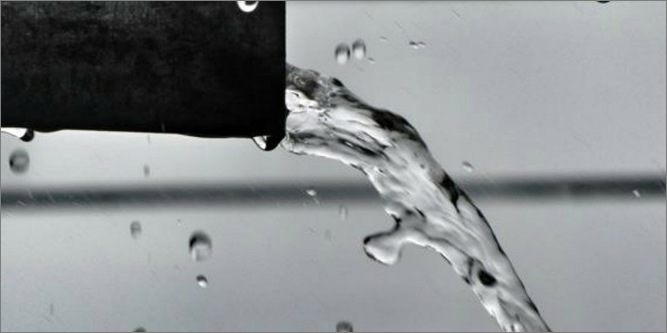Water: from ENEA a patent to reduce energy consumption and water treatment costs
31/3/2016

From the ENEA's research on wastewater treatment significant savings on total energy consumption, reduced management costs and increased efficiency of purification processes in small to medium-sized water treatment plants, accounting for 80% of the total plants. And new technologies for turning a treatment plant into an energy generating asset.
On the occasion of the World Water Day ENEA presented an innovative technology for the automated management of wastewater treatment plants, allowing to reduce overall energy consumption by up to 36% and management costs by 15%, besides guaranteeing improved efficiency of the biological processes for the removal of pollutants.
Before being reintroduced into water basins wastewater must be treated, since it often contains very high concentrations of pollutants such as ammonia, nitrogen and phosphorus. The technology patented by ENEA, through the use of probes, ensures a cost-effective, automated management of the processes for complete nitrogen removal. The patent, soon to be implemented in a full- scale plant, allows to simplify the management of the aeration systems (accounting for 75% of consumption), reducing the air used in the wastewater treatment tanks by up to 60%.
The technology, developed at the ENEA Bologna Research Center, fits into the broader context of energy consumption reduction measures related to wastewater disposal costs. According to the EPA, the United States Environmental Protection Agency, wastewater facilities account for 3% of US energy use. In Italy, the AEEGSI (Italian Regulatory Authority for Electricity, Gas and Water) estimates energy consumption of the integrated water services to be 7.5 billion kWh/year, approximately 2.3% of the annual national electricity demand , with an upward trend.
“Energy consumption from water services management is on the rise- Luca Luccarini, the ENEA researcher author of the patent, points out- In order to cut energy consumption from water treatment it’s necessary to improve the efficiency of equipment; more satisfactory results derive from adopting management practices supporting optimized performance of treatment processes, particularly wastewater aeration”.
But more can be done, turning the treatment plant into an energy generating asset.
ENEA has long been actively involved in research on technological developments of treatment plants towards becoming energy producers – Maurizio Coronidi, Head of the ENEA Laboratory for the Integrated Management of Waste, Wastewater and Raw and Secondary Materials, points out- It was among the first in Italy to substitute aerobic wastewater treatment for anaerobic technology that, following a complete overhauling of the treatment cycle, contributes to the electrical power grid”.
Additional technology options for converting waste into energy, such as hydrogen production, microbial fuel cells and microbial electrolysis cells, are being investigated.
ENEA is currently engaged in activities concerning the integration of consolidated technologies for the anaerobic treatment of wastewater (such as the Upflow Anaerobic Sludge Blanket) with membrane filtration processes and biological nitrogen removal systems (such as Anammox, with at least 25 operating full- scale plants worldwide but none in Italy).
The water treatment sector holds future potential which goes far beyond energy recovery, provided that innovative approaches are adopted to move beyond the current linear model of water treatment in which water is withdrawn from the environment, used once and then discharged to the environment, with a worse quality than the original source water .
Indeed today the word water is directly linked to the word scarcity. Population growth and climate change effects restrict the amount of safe, clean drinking water available relative to demand. In vast areas of the world there is already competition among agriculture, industry and cities for water supply; furthermore, the energy sector is evolving towards increasingly water-intensive technologies ( such as oil extraction from bituminous sands or bio-fuels production), increasing awareness of the connection between water and energy, the so called “ water-energy nexus”.
According to the latest data from the WEI (Water Exploitation Index) of the EEA (European Environment Agency), a large - scale indicator of water demand based on long-term projections of resources, today also Europe, even the north, is facing water scarcity.
The same trend is occurring globally: according to the 2015 OECD Report ”Principles on Water Governance”, 2.8 billion people live in water stress -prone areas, projected to reach 3.9 billions by 2030. The study also estimates that water demand will increase by 55% by 2050, with 240 million people without access to drinking water.
There are already numerous and important examples of water reuse and recovery practices maximizing the use of resources and at the same time reducing the need for technology required for the treatment, in a fit-for-(re)use view.
The transition to a circular economy requires to unleash the full potential of waste as a resource, focusing on water but also on nutrients such as nitrogen and phosphorus, to be used as fertilizers in agriculture, or even the production of biopolymers as bio degradable plastics such as, for instance, polyhydroxyalkanoates (PHA).
For more information please contact:
For the Patent: Automated management of wastewater treatment plants
Luca Luccarini, Bologna Research Center, luca.luccarini@enea.it
For the activities of the Lab “Technologies for the Integrated Management of Waste, Wastewater, Raw and Secondary Materials”:
Maurizio Coronidi, Casaccia Research Center, maurizio.coronidi@enea.it
Davide Mattioli, Bologna Research Center, davide.mattioli@enea.it
Luigi Petta, Bologna Research Center, luigi.petta@enea.it
Alessandro Spagni, Bologna Research Center, alessandro.spagni@enea.it
